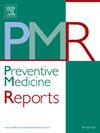Patterns of cannabidiol use among marijuana users in the United States
IF 2.4
3区 医学
Q2 PUBLIC, ENVIRONMENTAL & OCCUPATIONAL HEALTH
引用次数: 0
Abstract
Background
As more and more states are legalizing marijuana use for medical purposes, cannabidiol (CBD) products have gained significant popularity as self-medications for treating conditions. Despite the increasing use, there is insufficient data about how CBD use varies across different populations, particularly in relation to marijuana use status. Understanding these patterns is crucial to inform public health recommendations that address appropriate CBD use.
Methods
Data came from the 2022 National Survey on Drug Use and Health (NSDUH). NSDUH is a cross-sectional national survey that provides in-depth data about drug use and mental health in the representative sample of the United States. Descriptive analyses were used to assess the prevalence of CBD use overall and by marijuana use status. Additionally, adjusted logistic regression analyses were performed to examine demographic characteristics associated with CBD use.
Results
Overall, 10.5 % of the United States population reported using CBD in the past 30 days (current use). Prevalence of current CBD use was significantly higher among marijuana users (current users: 40.7 %, past-year users: 32.2 %, ever users: 19.1 %) than among non-marijuana users (non-current users: 5.09 %, non-past year users: 4.38 %, never users: 5.09 %). Females, adults, Whites, and individuals with fair/poor health status were more likely to use CBD than their respective counterparts.
Conclusion
CBD use was commonly reported among people who use marijuana. Public health initiatives targeting individuals who use marijuana are crucial for educating them about the potential benefits and risks of CBD use, as well as the safety of using CBD in conjunction with marijuana.
求助全文
约1分钟内获得全文
求助全文
来源期刊

Preventive Medicine Reports
Medicine-Public Health, Environmental and Occupational Health
CiteScore
3.90
自引率
0.00%
发文量
353
 求助内容:
求助内容: 应助结果提醒方式:
应助结果提醒方式:


